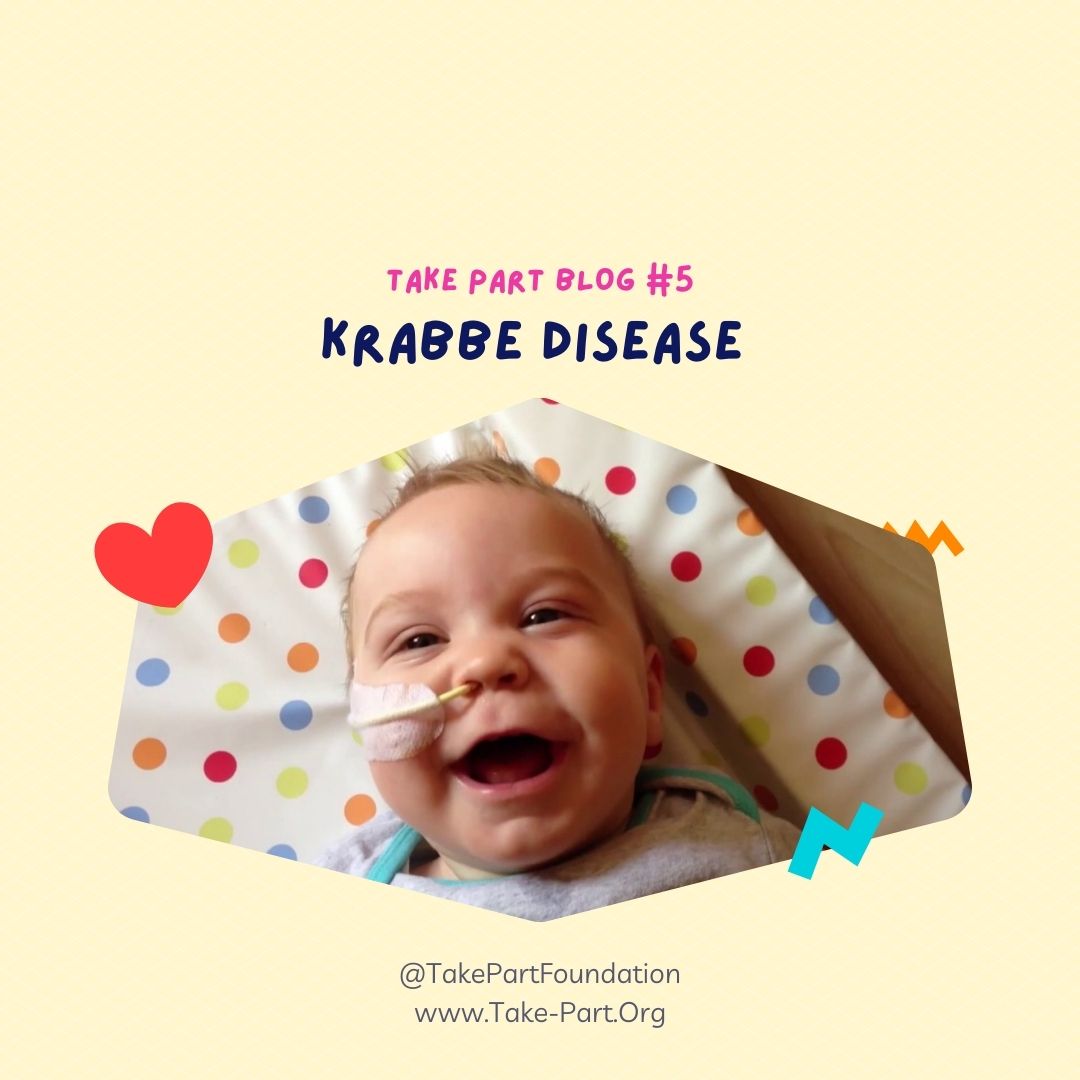Medical Information about Krabbe Disease:
With so many confusing things out on the internet, we also want you to also remember that Take Part supports children like yours on a day to day basis! If you want people to know the TRUTH of what your child is going through, go ahead and create a warrior profile through our website. This can be used to raise awareness on social media, or simply just shared between friends and family for updates.
As a team, none of us ARE doctors; however we work with some amazing medical professionals that have given us more insight below. Please continue reading and use the information to navigate your own personal journey or share with anyone you may know may benefit.
It is a rare genetic degenerative condition of the peripheral and central nervous system described by the presence of globoid cells having more than one nucleus. It is one of the leukodystrophy disorders present in your child which affects the enzymes of the white matter of the myelin. It causes breakdown of protective myelin sheath of the nerves resulting in destruction of brain cells of your child1. It is considered as a fatal disorder with average survival of 2 years and is caused by genetic variation in the GALC gene. This gene is responsible for making galactosylceramidase enzyme, which is responsible for breakdown of specific fats called galactolipids, most importantly galactosylceramide which is a component of myelin.
Symptoms
The symptoms of Krabbe disorder in your child depends on the age of the onset of the disease. Your child with early onset or late onset disease might experience following symptoms:
Early or infantile onset
It is the most severe form of disease which is developed during the first six months of life. Your child might experience:
- Irritability
- Slowed development and muscle weakness
- Partial unconsciousness
- Failure to thrive
- Hearing and vision loss
- Decreased movement
Late onset
It is less severe and often starts in adolescents or children. Your child might experience:
- Stiffness and weakness of muscles
- Involuntary movements and behavioural problems
- Dementia and seizures
- Lack of vision
Diagnosis
It could be diagnosed based on the symptoms your child shows which could be further verified by tests:
- Blood tests to check the GALC enzyme activity
- Checking for brain abnormalities using MRI
- Genetic testing for the mutation in genes
- Different symptomatic examinations such as for eyes and nerve conduction studies
Treatment and management
The treatment of your child with Krabbe disease focuses on managing symptoms. Following treatment options are available:
- Hematopoietic stem cell transplantation for those who have not yet shown symptoms
- Bone marrow transplant and gene therapy
- Physical therapy for different problems of muscles
Prognosis
The early onset disease is fatal – where children can die before the age of 2 years. This is compared to late onset disease, in which your child lives longer. Bone marrow transplantation has a better prognosis.
How is it inherited?
As this disorder is inherited in an autosomal recessive form which involves both copies of the gene mutated. Both the parents of the child with this condition would carry one copy of the mutated gene, but they normally do not show signs and symptoms of the condition.
